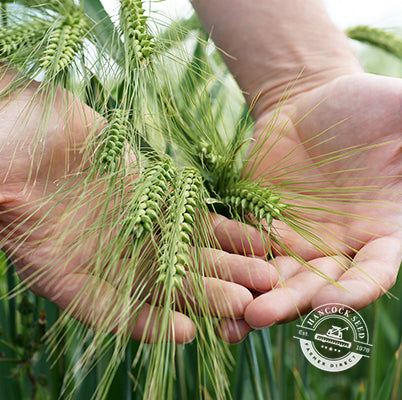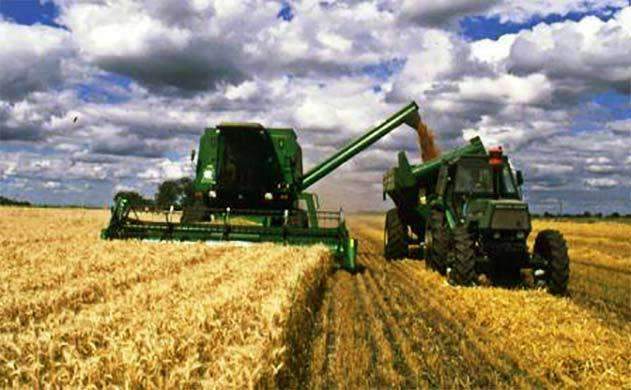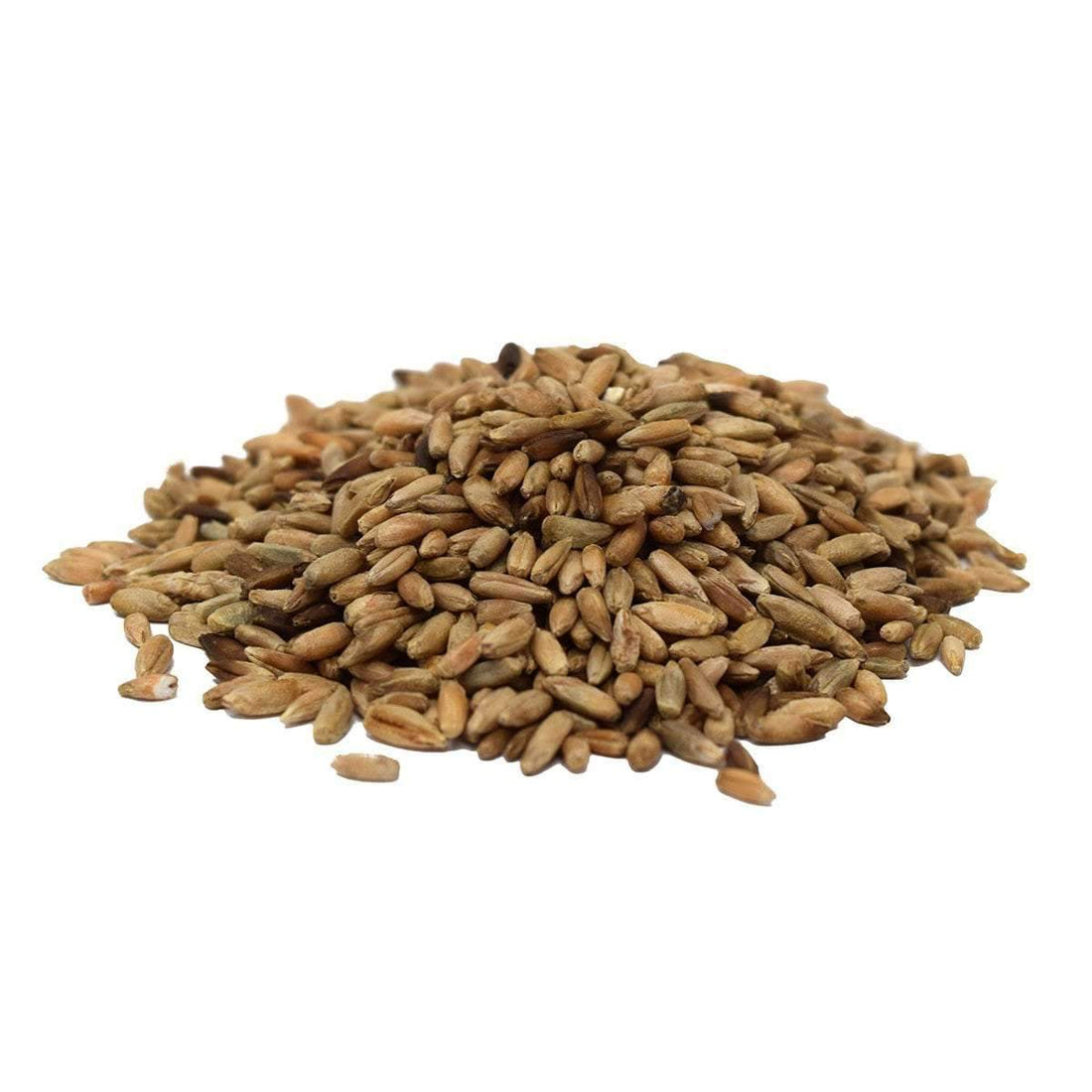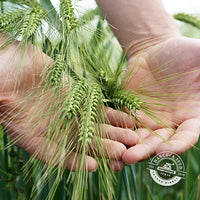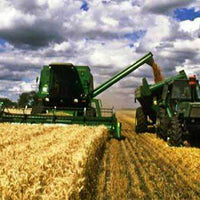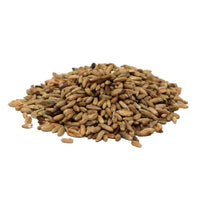
- When to plant:
- Fall, Winter
- Fertilizer:
- Varies
- Seeding rate:
- 75 - 100 lbs. per acre
- Overseeding rate:
- 50 lbs. per acre
- Seeding depth:
- 1/4 - 1/2 inch
- Ideal ph:
- 5.5 - 6.5
- Gmo:
- No
- Inoculant needed:
- No
- Coated or raw:
- Raw
- Lifecycle:
- Annual
- Climate zones:
- Cool Season, Transition Zone, Warm Season
Wrens Abruzzi Grain Rye Seed is the small grain most widely used for Winter grazing for cattle and wildlife in food plots. Grain rye is more cold tolerant than oats and generally produces more forage than either oats or wheat.
Product Information
- Application or Use: Cattle Forage, Livestock Grazing, Cover Crop, Erosion Control, Hay Production
- Germination Time: 5 - 7 days, under optimal conditions
- Growing Locations: Warm Season, Transition Zone, Cool Season
- Height: 8 - 20 inches
- Sunlight Requirements: 8+ hours, full sun for best results
- Advantages: More cold tolerant than oats and generally produces more forage than either oats or wheat.
- When to Plant: Recommended planting time is fall when night time temperatures are consistently below 65 degrees.
Product Detail
- Small grain used for winter grazing
- More cold tolerant than oats
- Produces more forage than wheat or oats
- Winter annual in the south
- Plant spring or fall for best results
Product Information
If rye is planted very early in the season, it is often hurt by various seedling diseases. It is often best to wait until cool weather prevails. Normally rye developed from northern states will produce little forage in late fall or early winter, and will usually be severely damaged by leaf rust; therefore, plant only varieties recommended for the Southeastern United States. Grain rye will also act as a winter annual in the south.
*Product packaging may appear different than what is pictured.
Plant during spring or fall for best results. Plant at a rate of 75 lbs. per acre if drilled, or at 100 lbs. per acre if broadcast. Plant at a depth of 1/4 to 1/2 in. Ensure that soil pH is between 5.5 and 6.5. Use 300 to 400 lbs. of fertilizer per acre.
When choosing to start a new lawn, remove old vegetation by using a de-thatcher, power rake or tiller to kill the existing vegetation. Rake or drag the area to remove debris and dead grass for a clean area. Ensure the soil is leveled and loosened to allow the seed to have good soil contact once spread on a clean seed bed.
If you have an area with heavy weed coverage, we recommend starting fresh by killing and removing the existing vegetation. If you choose to use chemicals, herbicides or fertilizers, you must check with the product's manufacturer prior to planting new seed to ensure the proper waiting period.
When overseeding an existing area, mow your lawn at the lowest setting and bag the clippingsx. Rake or drag any areas that have dead thatch or debris.

Seed Quality
Hancock Seed is dedicated to delivering the best seeds possible to our customers. Hancock Seed grows and harvests many of our products, and we acquire the majority of the rest from other family farmers.
All these seeds are processed, packaged and shipped from Hancock Farm. This helps us ensure that our high standards are met. Unlike much of the competition, we refuse to sell you a seed that was not gathered during the last harvest. You will always receive fresh product from Hancock.
Every seed we grow comes with 40 years of experience behind it...you can rest assured that all of our products are cultivated in a method that assures its potential for growth.

Your cart ( 0 )

Wrens Abruzzi Grain Rye Seed is the small grain most widely used for Winter grazing for cattle and wildlife in food plots. Grain rye is more cold tolerant than oats and generally produces more forage than either oats or wheat.
Product Information
- Application or Use: Cattle Forage, Livestock Grazing, Cover Crop, Erosion Control, Hay Production
- Germination Time: 5 - 7 days, under optimal conditions
- Growing Locations: Warm Season, Transition Zone, Cool Season
- Height: 8 - 20 inches
- Sunlight Requirements: 8+ hours, full sun for best results
- Advantages: More cold tolerant than oats and generally produces more forage than either oats or wheat.
- When to Plant: Recommended planting time is fall when night time temperatures are consistently below 65 degrees.
Product Detail
- Small grain used for winter grazing
- More cold tolerant than oats
- Produces more forage than wheat or oats
- Winter annual in the south
- Plant spring or fall for best results
Product Information
If rye is planted very early in the season, it is often hurt by various seedling diseases. It is often best to wait until cool weather prevails. Normally rye developed from northern states will produce little forage in late fall or early winter, and will usually be severely damaged by leaf rust; therefore, plant only varieties recommended for the Southeastern United States. Grain rye will also act as a winter annual in the south.
*Product packaging may appear different than what is pictured.
Plant during spring or fall for best results. Plant at a rate of 75 lbs. per acre if drilled, or at 100 lbs. per acre if broadcast. Plant at a depth of 1/4 to 1/2 in. Ensure that soil pH is between 5.5 and 6.5. Use 300 to 400 lbs. of fertilizer per acre.
Instructions
When choosing to start a new lawn, remove old vegetation by using a de-thatcher, power rake or tiller to kill the existing vegetation. Rake or drag the area to remove debris and dead grass for a clean area. Ensure the soil is leveled and loosened to allow the seed to have good soil contact once spread on a clean seed bed.
If you have an area with heavy weed coverage, we recommend starting fresh by killing and removing the existing vegetation. If you choose to use chemicals, herbicides or fertilizers, you must check with the product's manufacturer prior to planting new seed to ensure the proper waiting period.
When overseeding an existing area, mow your lawn at the lowest setting and bag the clippingsx. Rake or drag any areas that have dead thatch or debris.















